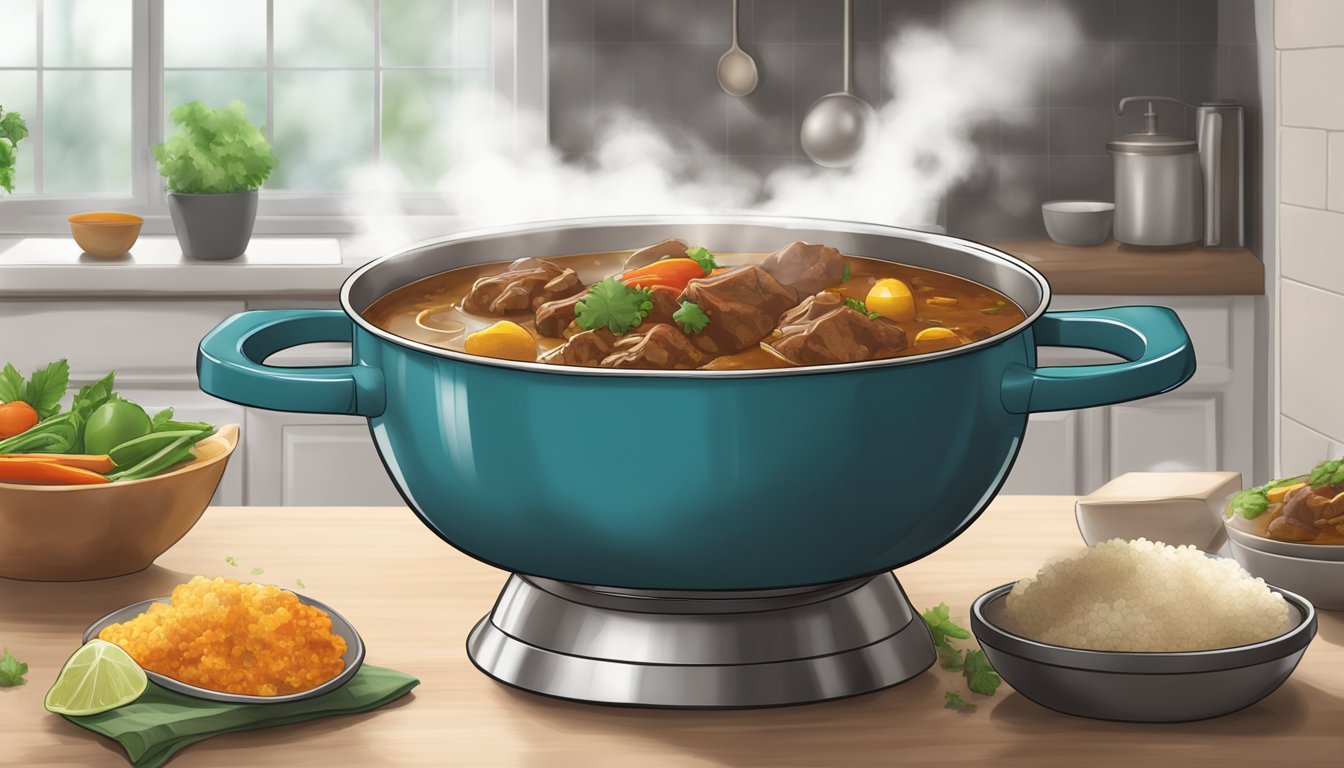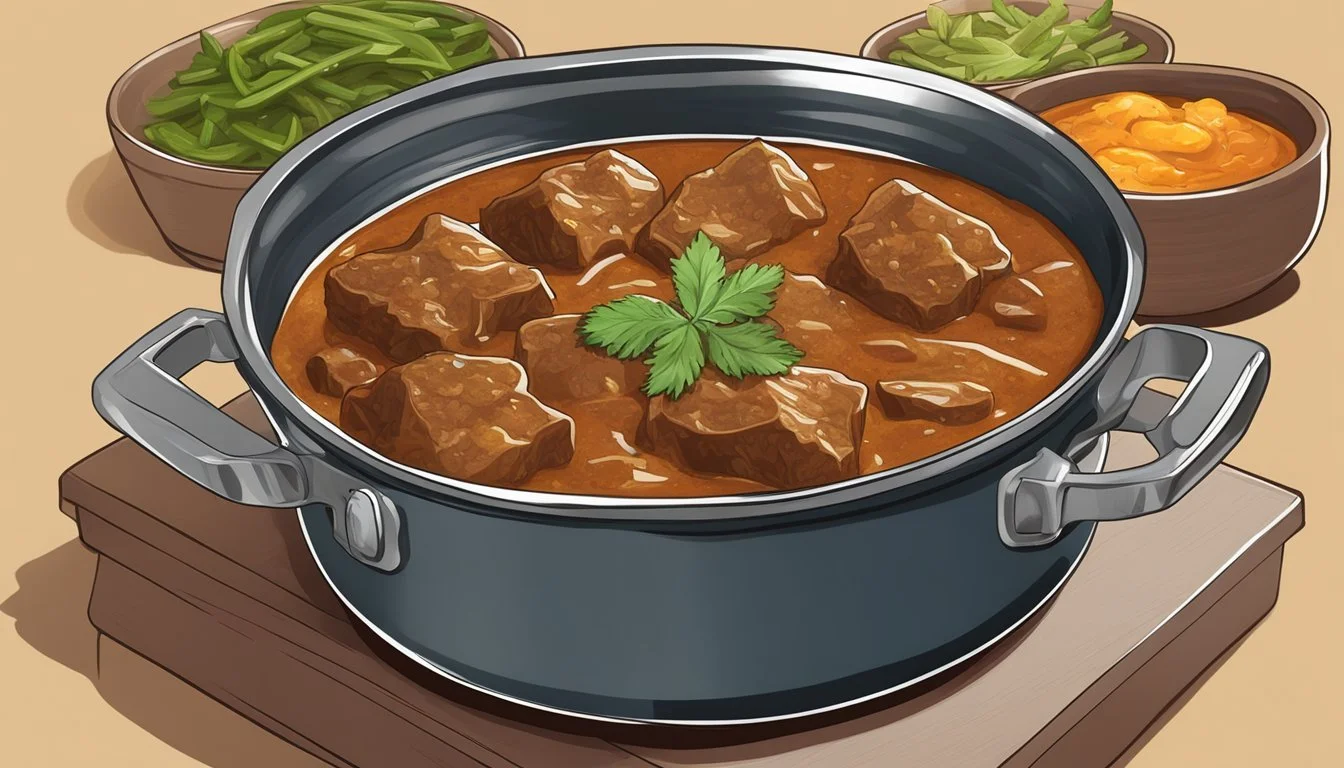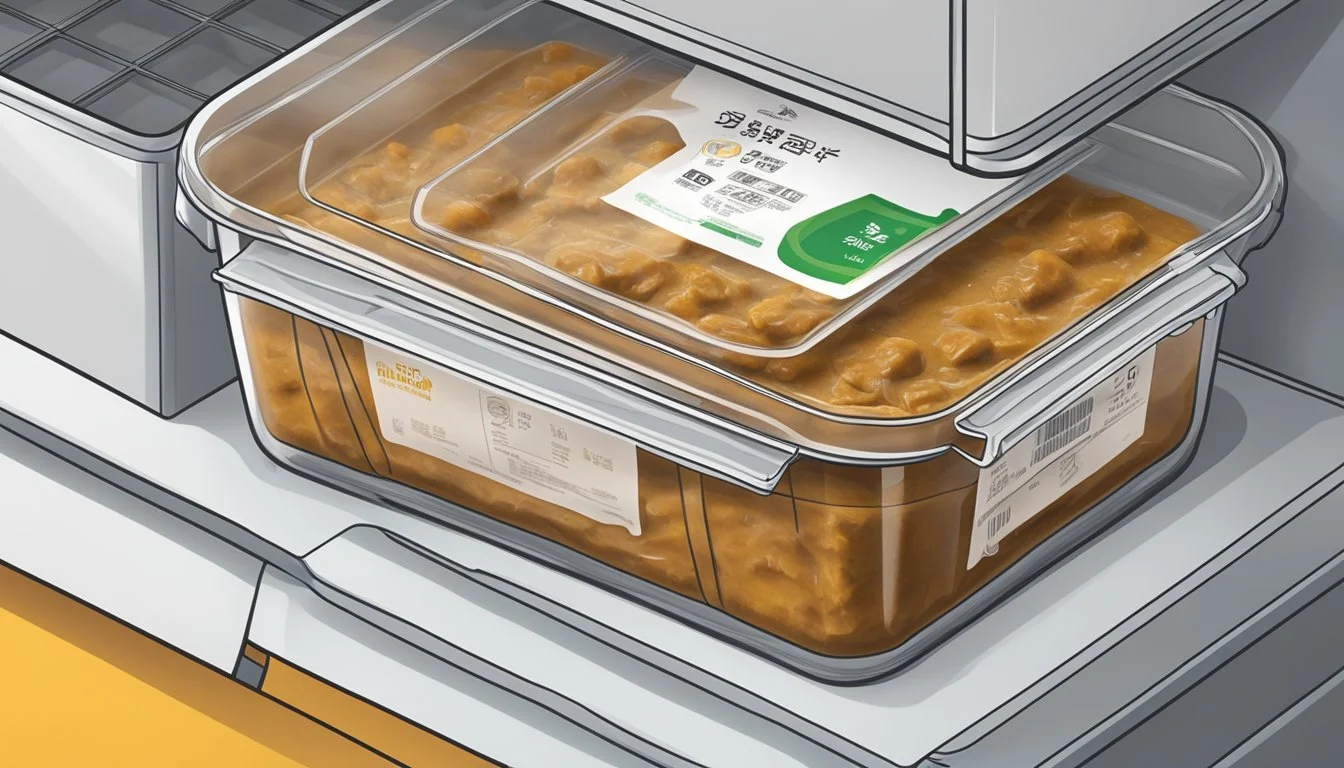How Long Does Beef Curry Last?
Expert Storage Tips and Guidelines
When it comes to understanding how long beef curry can be safely stored, it's essential to consider both refrigeration and freezing options. In the fridge, beef curry lasts for 3 to 5 days if stored in airtight containers. This timeline ensures the flavors remain intact and the dish remains safe to eat.
Freezing beef curry extends its shelf life significantly, allowing it to be enjoyed up to 6-8 weeks later. Proper handling and storage are vital to preserve the quality and taste of the dish. Make sure to cool the curry to room temperature before storing to avoid moisture buildup and bacterial growth.
The versatility of beef curry makes it a popular choice for meal prep, and knowing the proper storage methods can help maintain its appeal. Ensuring your beef curry is stored correctly will let you savor its rich flavors whenever you crave a comforting meal.
Understanding Curry and Its Components
Beef curry is a flavorful and aromatic dish with a rich blend of spices and fresh ingredients. It is commonly made with beef, a mix of traditional curry spices, and a creamy base like tomato sauce or coconut milk.
Ingredients in Beef Curry
Beef curry contains various spices and fresh ingredients that create its complex flavor. The primary ingredients include beef, onions, tomatoes, and garlic. These foundational elements are often paired with ginger and garam masala. To enhance the aroma and taste, common spices include cumin, turmeric, cardamom, cinnamon, cloves, and bay leaves.
Many recipes also use coconut milk or yogurt to add creaminess to the sauce. Beef stock is often included to deepen the flavor. Fresh herbs like cilantro can be used as garnish. This blend ensures a savory and satisfying dish.
Flavor Profile of Beef Curry
The flavor profile of beef curry is marked by its bold and spicy essence. Cumin and coriander provide earthy undertones, while turmeric gives an earthy, slightly bitter taste and bright color. Cardamom and cinnamon add warmth and a hint of sweetness.
Cloves introduce a pungent flavor, while bay leaves bring a subtle, herbal nuance. The inclusion of garlic and onions contributes to its base taste, making the curry robust. Ginger offers a zesty, fresh kick, and curry powder often contains a mix of these spices.
Finally, the addition of coconut milk or yogurt balances the heat from chili peppers, making the dish creamy and rich. This creates a harmonious balance of spice, sweetness, and richness in every bite.
Safe Storage Practices
Storing beef curry properly ensures it remains safe to eat and retains its flavors. Key practices include maintaining the correct temperature and using appropriate containers.
Refrigeration Guidelines
Beef curry should be stored in the refrigerator within two hours of cooking to minimize bacterial growth. It should be placed in an airtight container to avoid contamination and moisture buildup. The fridge temperature needs to be below 40°F (4°C) to keep leftovers safe.
When refrigerated properly, leftover curry can last 3-4 days. Always check for signs of spoilage, such as an off smell or mold. Labeling containers with the date helps keep track of how long the curry has been stored.
Freezing and Thawing Techniques
To extend the shelf life of beef curry, use the freezer. Store the curry in airtight containers or freezer bags, removing as much air as possible to prevent freezer burn. Properly stored, frozen curry can last 6-8 weeks.
When ready to use, thaw the curry in the refrigerator overnight. Avoid thawing at room temperature as it can promote bacterial growth. Reheat thoroughly to ensure it reaches a safe internal temperature before consuming.
Maximizing Shelf Life
Proper storage and cooking methods can significantly extend the shelf life of beef curry while preserving its flavor and safety. Following key practices like using airtight containers and paying attention to cooking techniques can make a big difference.
Optimal Storage Containers
Using airtight containers is crucial to preserving the freshness of beef curry. These containers help prevent moisture buildup and bacterial growth, which can reduce spoilage. Glass or BPA-free plastic containers are good options. They not only seal tightly but also resist staining and odors from the spices.
Freezer bags can also be effective. They are space-efficient and can be labeled with dates to keep track of leftovers. Keeping the curry at temperatures below 40°F (4°C) reduces the risk of bacterial contamination.
Impact of Cooking Methods
The way beef curry is cooked can influence its shelf life. Simmering allows the flavors to meld and can better preserve the dish when stored. Pressure cookers and Dutch ovens can cook curry quickly and evenly, which can help in maintaining its texture and taste during storage.
Avoiding abrupt cooling is crucial. Let the curry reach room temperature before storing. This minimizes condensation, which can lead to bacterial growth. For reheating, using a skillet with a lid helps maintain moisture, while the oven can be used if reheating larger portions.
Reheating Beef Curry
To enjoy leftover beef curry, it is crucial to reheat it properly. There are three main ways to reheat beef curry: using a microwave, a stovetop, or an oven. Each method has its own set of steps to ensure the curry is heated evenly and safely.
Microwave Reheating Process
When using a microwave, the process is both quick and efficient. Start by placing the beef curry in a microwave-safe container. Cover it with a microwave-safe lid or a damp paper towel to help retain moisture.
Steps:
Stir: Stir the curry to distribute the heat evenly.
Heat: Microwave on medium-high for 1-2 minutes.
Check: Stir again, then continue heating in 1-minute intervals until piping hot.
It is essential to stir the curry occasionally to avoid cold spots. This method is perfect for smaller portions and provides a quick way to enjoy your meal.
Stovetop Reheating Methods
Using a stovetop to reheat beef curry allows for a more controlled and even heating process. A heavy-bottomed pot or pan works best for this method.
Steps:
Medium-Low Heat: Heat the pot over medium-low heat.
Add Curry: Add the curry, stirring occasionally to prevent sticking.
Add Liquid: If the curry appears too thick, add a splash of water or broth.
Simmer: Allow it to simmer gently, stirring regularly, until hot.
This method is ideal for larger quantities and helps maintain the curry's texture and flavor without drying it out.
Oven Reheating Tips
Reheating beef curry in an oven takes a bit longer but is excellent for achieving even heat distribution. Preheat the oven to 350°F (175°C) for best results.
Steps:
Oven-Safe Dish: Transfer the curry to an oven-safe dish.
Cover: Cover the dish with aluminum foil to keep the moisture in.
Heat: Place it in the preheated oven and heat for 15-20 minutes.
Stir: Stir halfway through to ensure even heating.
This method is perfect for reheating larger portions and helps retain the curry's original richness and depth of flavor.
Identifying Spoilage
When determining if beef curry has gone bad, key indicators include changes in smell, color, texture, and signs of mold. Recognizing these signs early can prevent foodborne illness and ensure safe consumption.
Smell and Color Indicators
A clear sign of spoiled beef curry is an unpleasant odor. Fresh curry typically has a rich, aromatic scent from spices and herbs. If it smells sour, rancid, or off in any way, it is likely spoiled.
The color can also reveal spoilage. Fresh curry usually displays vibrant colors, such as rich reds or yellows. If there is any dullness, darkening, or unexpected color changes, these are warning signs. Spoilage bacteria can alter the appearance significantly, so always inspect closely.
Texture and Mold Signs
Texture is another critical factor. Fresh beef curry should be slightly thick and smooth. If it has turned unusually slimy or excessively watery, it might have gone bad.
Mold growth, though rare in the early stages, is a definite indicator of spoilage. If you observe any fuzzy spots, whether white, green, or black, discard the curry immediately. Mold often starts in small patches, so check thoroughly.
Detecting these signs promptly can ensure that your leftovers are safe to eat and prevent the risks associated with consuming spoiled food.
Nutritional Considerations
Beef curry is not only delicious but also carries various nutritional benefits. The following subsections will cover the calorie and protein content, the fat and cholesterol information, and the vitamins and minerals profile of a typical beef curry.
Calorie and Protein Content
Beef curry is a rich source of calories and protein, making it a substantial meal choice. A standard serving (approximately 1 cup or 240 grams) of beef curry typically contains about 300-400 calories. This calorie count can vary based on the ingredients used and cooking method.
Protein content is another important aspect. Beef curry provides a significant amount of this macronutrient. One serving can contain around 20-25 grams of protein, essential for muscle repair and growth. Additionally, the inclusion of vegetables can add extra nutrients without significantly altering the calorie or protein content.
Fat and Cholesterol Information
Beef curry includes a mix of fats, which are crucial for a balanced diet. However, attention should be paid to the type and amount of fat consumed. A typical serving can contain 15-20 grams of fat. This includes around 5-8 grams of saturated fat, which should be consumed in moderation to maintain heart health.
Cholesterol levels in beef curry can also be a concern. A single serving may contain approximately 70-90 milligrams of cholesterol. Individuals monitoring their cholesterol intake should be mindful of this amount, especially if other high-cholesterol foods are included in their diet.
Vitamins and Minerals Profile
Beef curry is rich in several essential vitamins and minerals. For instance, it contains significant quantities of vitamin A and vitamin C, especially if the curry includes vegetables like bell peppers and tomatoes. These vitamins are vital for immune function and skin health.
Potassium, an important mineral for maintaining blood pressure levels, is also present in beef curry. One serving may provide about 400-600 milligrams. Additionally, calcium content can be beneficial, depending on the ingredients used, contributing to overall bone health.
The presence of fiber, derived from vegetables and spices, supports digestive health and enhances nutrient absorption.
Serving Suggestions
Beef curry can be enhanced with a variety of accompaniments and garnishes that elevate its flavors and presentation. Additionally, pairing it with suitable sides transforms it into a balanced, complete meal.
Accompaniments and Garnishes
Common accompaniments for beef curry include rice, naan, and roti. Rice, particularly basmati, absorbs the curry sauce well and provides a neutral base that balances the spices.
Naan, a leavened flatbread, is excellent for dipping and scooping up the sauce.
To add a fresh touch, garnishes like cilantro and lime wedges are recommended.
Cilantro's herbal notes enhance the curry's aromas, while a squeeze of lime adds a tangy contrast. These garnishes not only improve flavor but also brighten the dish visually.
Making Beef Curry a Complete Meal
To create a comprehensive meal, consider adding vegetable sides or salads. Steamed or roasted vegetables, such as potatoes or carrots, complement the rich beef curry.
Lentils or chickpeas can be included for extra protein and fiber.
Including yogurt or a raita side dish can help temper the curry's heat and provide a cooling effect.
A salad with cucumbers, tomatoes, and a light dressing can offer a refreshing bite that balances the curry's warmth.
These components together ensure a nutritionally balanced and satisfying meal.
Culinary Variations
Beef curry is a diverse dish with numerous variations that reflect different culinary traditions and ingredients. These variations can significantly alter the flavor profile and texture of the dish.
Regional Curry Varieties
Different regions have their own distinctive styles of beef curry. Indian beef curry often includes a mix of spices like cumin, coriander, turmeric, and garam masala, typically cooked in a tomato gravy or with yogurt. This variety is rich and aromatic, with a depth of flavors.
Thai beef curry uses ingredients such as coconut milk, fish sauce, and lime juice. The inclusion of Thai basil or cilantro adds fresh herbal notes. This curry is usually less spicy and has a creamy texture due to the coconut milk.
Malaysian beef curry, known as Rendang, is slow-cooked until the liquid is reduced, and the spices are deeply infused into the meat. It commonly includes coconut milk and kerisik, which are toasted grated coconut.
Alternative Ingredients and Substitutes
When creating beef curry, there are several alternative ingredients and substitutes that can be used. For those who may not have access to specific spices, pre-made curry powder or paste can be a convenient substitute, although it may alter the authenticity of the flavor.
Coconut milk can be substituted with cream or milk for a less tropical and slightly different texture. For a lighter option, low-fat yogurt can also be used, adding a tangy taste.
Vegetarians can replace beef with ingredients like tofu or cauliflower to create a meat-free version. Fish sauce can be excluded or replaced with soy sauce for a vegetarian-friendly option.
Using clarified butter (ghee) instead of regular oil can deepen the flavor and add richness to the curry. Additionally, marinating the beef with spices beforehand can enhance the taste and tenderness of the meat.









